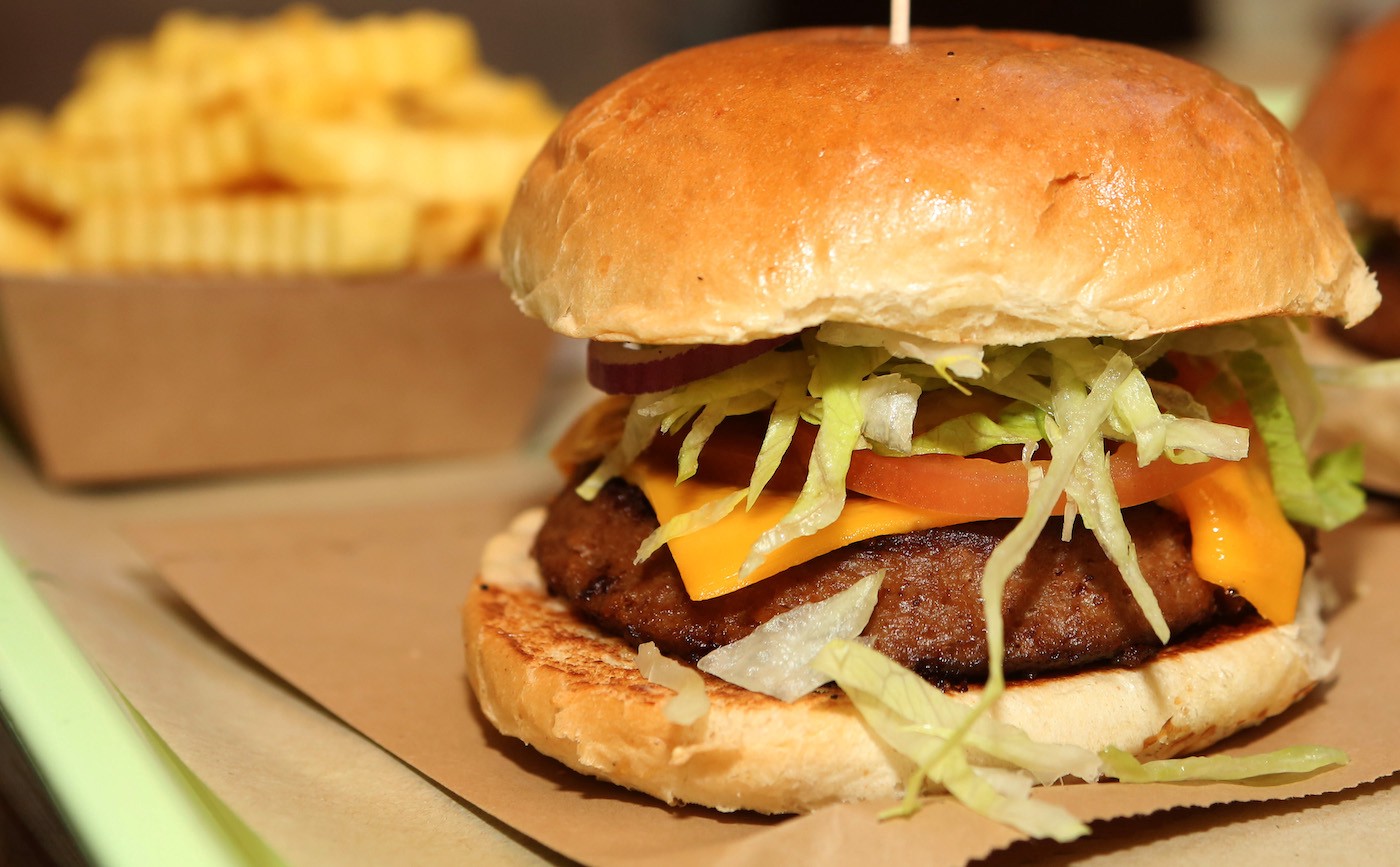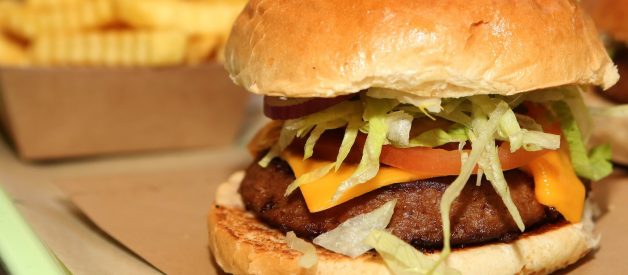Dr. Mark Hyman reveals all you need to know about meat substitute burgers
 Getty Images
Getty Images
It seems like you can?t go to a restaurant nowadays without seeing an Impossible Burger, Beyond Meat burger, or other meat-substitute burgers on the menu. But what?s the deal with these burgers? Are they actually healthy for us? Are they the same as a traditional veggie burger, or a different thing all together? To find out, we turned to New York Times bestselling author and health expert Dr. Mark Hyman, author of the new cookbook Food: What the Heck Should I Cook?.
Dr. Hyman broke it all down for our Wake-Up Call newsletter? and shared some healthy alternatives.
Katie Couric: Meat substitute burgers seem to be everywhere these days. We know you have some strong opinions on these meat substitutes ? but before we get into that, can you please explain to us what exactly these are and what goes into them?
Dr. Mark Hyman: Meat substitutes, like the Impossible Burger or Beyond Meat, are highly processed foods made to replace meat in a meal and are then marketed as plant-based. We should all be eating a more plant-rich diet. And while these products do contain ingredients that come from plants ? usually derivatives of soy, which is used in Impossible Burgers, and in other products, forms of wheat or pea protein ? these plants are so processed and refined they are far from a whole plant food. Remember, Twinkies are plant-based. Ideally we should eat whole plant-based foods.
These meat substitute burgers are also combined with a large amount of other processed ingredients, like modified food starch, yeast extract, and cultured dextrose just to name a few. We can?t talk about these products without pointing out the use of genetically modified organisms, or GMOs, which Impossible Burger uses for two different ingredients: soy leghemoglobin and soy protein. We don?t yet have the complete picture of what GMOs can do to our health, but we do know that GMO crops like soy and wheat are heavily sprayed with toxic herbicides like glyphosate.
Glyphosate also harms our microbiome, an essential part of our health from immunity to digestion, skin health, brain function, and so much more. Tests show that an Impossible Burger has 11 times as much glyphosate as a Beyond Burger, or 11 parts per billion. Research shows that 11 pbb is 110 times the amount of glyphosate that can harm your gut bacteria. It also has been linked to increased cancer risk, according to a report by a working group of 17 experts from 11 countries published by the International Agency for Research on Cancer.
So how are these meat substitute burgers different from a veggie burger? A lot of people assume they?re the same.
A true veggie burger is exactly as it sounds: shredded veggies formed into a patty, sometimes with grains or beans and lots of herbs and spices. Impossible Burgers are not veggie burgers. They are mostly made up of water, GMO soy protein concentrate, coconut oil, sunflower oil, and flavorings. They also contain 16 other ingredients that are not whole vegetables, or even real foods. Impossible Burgers are strictly a meat substitute, using technology to mimic the taste and texture of beef, without the nutrient-density and simplicity of real vegetables.
Okay, so now let?s break it all down. Are these burgers actually healthy for us? Why or why not?
If you?re choosing an Impossible Burger over beef from a conventional animal feeding operation or a concentrated animal feeding operation (CAFO), then it is much better for the environment and reduces greenhouse gas emissions. It may be better, as well, from a health point of view (but this is unproven as yet). This is because you?d be avoiding inflammatory fats, hormones, and antibiotics from that CAFO meat and the pollution and inhumane methods used to produce CAFO beef. If you have a choice between a burger like this and a grass-fed burger from a regenerative farm, the real beef burger is a much better option for your health and the planet.
In fact, Quantis ? a lifecycle analysis company ? studied the Impossible Burger, compared to a regeneratively raised beef burger. The Impossible Burger added 3.5 kg of CO2 to the atmosphere, while the regeneratively raised burger removed 3.5 kg of CO2 from the atmosphere. That means you would have to eat one grass-fed burger to offset the greenhouse gas emissions produced by one Impossible Burger. High-quality beef like this provides natural sources of heme iron, B vitamins, protein, zinc, and other nutrients that are added as synthetic ingredients to fake burgers.
Overall I do not consider meat substitutes a health food. The cornerstone of using food as medicine is eating REAL whole food, that provides information our bodies can understand and use, and nothing in the Impossible Burger counts as that.
Why do you think these ?burgers? are so trendy right now? They?re everywhere!
There?s always going to be a new food trend; some new product people have been promised will be better for their health. I think it?s good that people are starting to think about the way our food system impacts the environment (that?s why I wrote my upcoming book Food Fix). There are lots of things happening right now demanding we focus our attention on that problem, like devastating fires, declining soil quality and quantity, and pollution in our air, land, and water.
Being vegan is better for our environmental and climate problems. (However, growing rice and soy produces greenhouse gas emissions, too). But it is not better than eating food or animals from a regenerative farm. Savvy food marketing and misinformation tells consumers otherwise. People think they?re doing the right thing for their health and the planet, so these fake burgers have gained popularity.
If someone isn?t a vegetarian or vegan, or doesn?t have any other health reason to avoid meat, would you suggest they go for a regular beef burger over these meat substitutes?
Grass-fed beef is always the better option ? regenerative is even better ? but I would avoid CAFO beef and fake meat. I?m 100% on board with a plant-rich diet. In fact, I always recommend three-quarters of every meal be from colorful vegetables. But if you?re going to eat anything ?meat-like,? go for the real deal, make it a side and not the star of the meal, and focus on quality.
And if someone is trying to reduce red meat from their diets ? including those who are concerned about their environmental impact ? what would you suggest they go for on a menu instead of these meat substitute burgers?
There are plenty of other really delicious, healthy, whole foods that we can eat without turning to processed fake meats and without needing to eat real meat at every meal. The simplest and most nutritious way to eat is choosing foods in their most natural form, so focusing on a variety of colorful vegetables, some low-glycemic fruits, and healthy fats. Protein is also really important, so for plant-based sources, enjoy beans or legumes with gluten-free whole grains (not whole grain flour!), and nuts and seeds as well.
Anyone who is vegan needs to pay special attention to getting enough complete protein (meaning all the essential amino acids our bodies can?t make, from a variety of different foods) along with vital nutrients like B12, omega-3 fats, and iron among others, which is what makes eating this way so challenging, and sometimes harmful to our health. And if you can buy food grown on regenerative farms, it?s better for you, the animals, and the planet.
As for cooking, what?s a healthy ?burger? alternative we can all make at home?
There are so many tasty ways to make a home-cooked veggie burger. Start with shredded veggies like sweet potatoes, zucchini, beets, onions, and/or carrots, and make sure they?re really dry. Combine with some drained lentils, black beans, or chickpeas and some almond or coconut flour. Eggs can be used to hold it all together or flaxseed works for those who don?t eat eggs. I always like to add fresh garlic, too. Then just add a bunch of tasty herbs and sea salt and blend everything together in a food processor. This is a fun template to play with and you just need the mixture to be sticky enough to form patties, then you can cook them up in a skillet with a little avocado oil. It?s really easy to do in your own kitchen and a much better option than store-bought.
Follow Dr. Mark Hyman on Instagram, Twitter, and Facebook, and check out his books on Amazon or your local books retailer.
This originally appeared in Katie Couric?s Wake-Up Call newsletter. Subscribe here.


